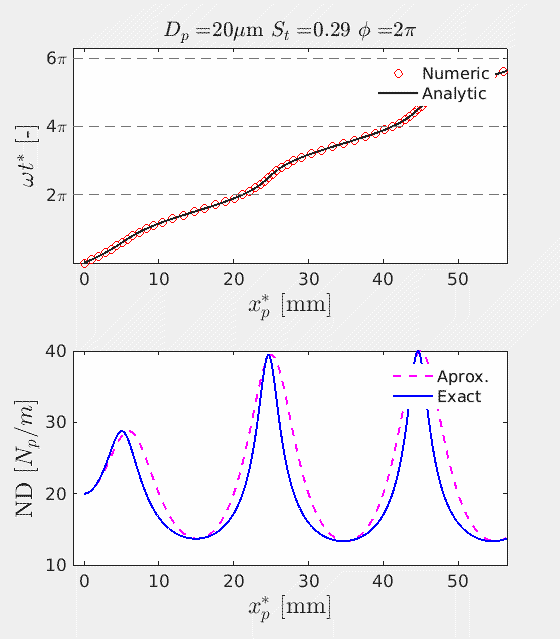Flame dynamics characterization of Spray Flames
Motivation
Totally premixed flames respond predominantly to upstream velocity perturbations. Nevertheless, most of the ‘real world’ combustion chambers involve partially premix and/or spray flames. Consequently, it becomes indispensable to develop new flame models in terms of ‘additional’ meaningful inputs, such as pressure and equivalence ratio fluctuations. In spray flames, quantities describing droplet dispersion and evaporation rates could be considered as further inputs.
1D Flame
The first part of this project consists in developing an analytical model for the transfer function that relates velocity fluctuations of the continuous phase (air) with velocity fluctuations of the disperse phase (droplets) at certain reference points. The domain under study at this instance will be a 1D duct with acoustic non-reflecting boundary conditions. Subsequently, a 1D laminar flame will be considered. The system will be set up in such a way that 3 zones are clearly distinguished: zone of droplet dispersion, zone of droplet evaporation and zone of reaction. An analytical transfer function will be derived that relates velocity fluctuations of the continuous and disperse phase with fluctuations of equivalence ratio. A correct modeling of evaporation is fundamental for the accurateness of the analytical formulation. Finally, a simple model will be derived, based on the previous work at the department, that describes the relation between fluctuations of equivalence ratio with fluctuations of unsteady heat release rate. The analytical transfer functions derived will be compared with numerical results from CFD. The second part of the project will make use of the analytical transfer functions in order to study combustion instability by means of network models. Several parameters and mechanisms influencing instability can be studied such as: injection velocity, droplet diameter and evaporation rate.

2D Flame
Once the 1D flame has been properly characterized, we will focus on a 2D laminar flame of Bunsen Type where experimental and numerical data is available. The objective is to decompose the Flame Transfer Function that relates velocity fluctuations of the continuous phase with fluctuations of unsteady heat release rate. This decomposition will be based on the transfer functions derived in the first part of the project. The reliability of the work relies on the assumption that the dispersion, evaporation and reaction are clearly differentiated in space. The knowledge gain in the 1D and 2D Flame will be of great importance for a future study of combustion instability in 3D turbulent spray flames.